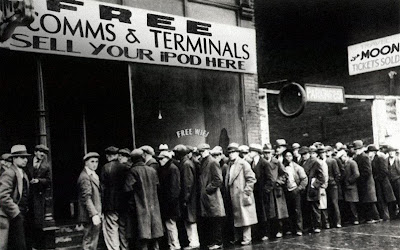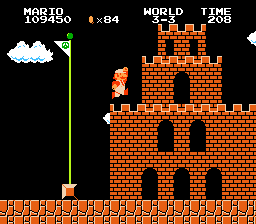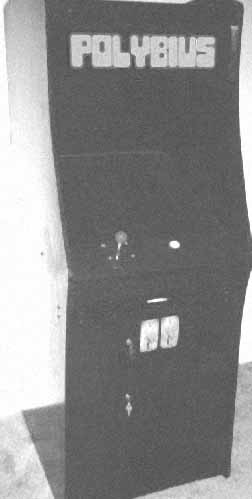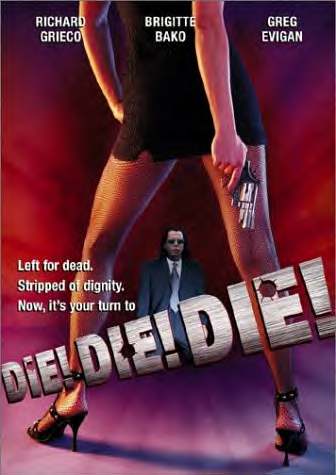Collected by Telegraph
From classics and sci-fi to poetry, biographies and books that changed the world… we present the ultimate reading list. Illustrations by David Juniper
CLASSICS
The Illiad and The Odyssey
Homer
Set during the Trojan War, The Iliad combines battle scenes with a debate about heroism; Odysseus’ thwarted attempts to return to Ithaca when the war ends form The Odyssey. Its symbolic evocation of human life as an epic journey homewards has inspired everything from James Joyce’s Ulysses to the Coen brothers’ film, O Brother Where Art Thou?.
The Barchester Chronicles
Anthony Trollope
A story set in a fictional cathedral town about the squabbles and power struggles of the clergy? It doesn’t sound promising, but Trollope’s sparklingly satirical novels are among the best-loved books of all time.
Pride and Prejudice
Jane Austen
Heroine meets hero and hates him. Is charmed by a cad. A family crisis – caused by the cad – is resolved by the hero. The heroine sees him for what he really is and realises (after visiting his enormous house) that she loves him. The plot has been endlessly borrowed, but few authors have written anything as witty or profound as Pride and Prejudice.
Gulliver’s Travels
Jonathan Swift
Swift’s scathing satire shows humans at their worst: whether diminished (in Lilliput) or grossly magnified (in Brobdingnag). Our capacity for self-delusion – personified by the absurdly pompous Gulliver – makes this darkest of novels very funny.
Jane Eyre
Charlotte Brontë
Cruelty, hypocrisy, dashed hopes: Jane Eyre faces them all, yet her individuality triumphs. Her relationship with Rochester has such emotional power that it’s hard to believe these characters never lived.
War and Peace
Tolstoy
Tolstoy’s masterpiece is so enormous even the author said it couldn’t be described as a novel. But the characters of Andrei, Pierre and Natasha – and the tragic and unexpected way their lives intersect – grip you for all 1,400 pages.
David Copperfield
Charles Dickens
David’s journey to adulthood is filled with difficult choices – and a huge cast of characters, from the treacherous Steerforth to the comical Mr Micawber.
Vanity Fair
William Makepeace Thackeray
‘”I’m no Angel,” answered Miss Rebecca. And to tell the truth, she was not.’ Whether we should judge the cunning, amoral Becky Sharp – or the hypocritical society she inhabits – is the question.
Madame Bovary
Gustave Flaubert
Flaubert’s finely crafted novel tells the story of Emma, a bored provincial wife who comforts herself with shopping and affairs. It doesn’t end well.
Middlemarch
George Eliot
Dorothea wastes her youth on a creepy, elderly scholar. Lydgate marries the beautiful but self-absorbed Rosamund. George Eliot’s characters make terrible mistakes, but we never lose empathy with them.
POETRY
Sonnets
Shakespeare
Shakespeare’s sonnets contain some of poetry’s most iconic lines – and a mysterious insight into his personal life.
Divine Comedy
Dante
Dante Alighieri’s epic tale of one man’s journey into the afterlife is considered Italy’s finest literary export.
Canterbury Tales
Chaucer
These humorous tales about fictional pilgrims made an important contribution to English literature at a time when court poetry was written in either Anglo-Norman or Latin.
The Prelude
William Wordsworth
This posthumously published work is both an autobiographical journey and a fragment of history from the revolutionary and post-revolutionary years.
Odes
John Keats
Littered with sensuous descriptions of nature’s beauty, Keats’s odes also pose profound philosophical questions.
The Waste Land
T. S. Eliot
Eliot’s vision of dystopia became a literary landmark, and introduced new techniques to the modern poet. He remains one of the defining figures of 20th-century poetry.
Paradise Lost
John Milton
Since its publication in 1667, Milton’s 12-book English epic – in which he sets out to ‘justify the ways of God to men’ – has been considered a classic.
Songs of Innocence and Experience
William Blake
Blake’s short poems are simple in rhythm and rhyme, but sophisticated in meaning. Written during a time of political turmoil, they embody his radical sympathies and anti-dualist ideas.
Collected Poems
W. B. Yeats
Considered a driving force in the revival of Irish literature, Yeats fruitfully engages the topics of youth, love, nature, art and war.
Collected Poems
Ted Hughes
Although Hughes was a colossal presence among the English literary landscape – his work often draws upon the forbidding Yorkshire countryside of his youth – his personal life had a tendency to overshadow his talent.
LITERARY FICTION
The Portrait of a Lady
Henry James
James’s mastery of psychology has never been more elegantly expressed nor more gripping than in his tale of Isabel Archer, a young American in search of her destiny, and Gilbert Osmond, the ultimate cold fish and one of literature’s most repellent villains.
A la recherche du temps perdu
Proust
A novel whose every sentence can be a struggle to finish may sound forbidding, but this masterpiece of modernity, taking us into every nook and cranny of the narrator’s fascinating mind, is worth all the effort.
Ulysses
James Joyce
Banned in Britain and America for its depiction of female masturbation, Joyce’s Ulysses takes its scatological stand at the pinnacle of modernist literature. Lyrical and witty, its stream-of-consciousness narration deters many, but makes enraptured enthusiasts of others.
For Whom the Bell Tolls
Ernest Hemingway
A sparse, masculine, world-weary meditation on death, ideology and the savagery of war in general, and the Spanish civil war in particular.
Sword of Honour trilogy
Evelyn Waugh
A poignant, ironic study of the disintegration of aristocratic values in the face of blank bureaucracy and Second World War butchery, Men at Arms, Officers and Gentlemen and Unconditional Surrender are Waugh’s crowning achievements.
The Ballad of Peckham Rye
Muriel Spark
Comic, satirical and ineffably odd, Spark’s fifth novel introduces Dougal Douglas, ghost-writer, researcher, mysterious figure of Satanic magnetism and mayhem, to the upper working-class/ lower middle-class milieu of Peckham.
Rabbit series
John Updike
We first meet Harry ‘Rabbit’ Angstrom in Rabbit, Run, as a boorish, unhappy former basketball jock who runs from (and to) his pregnant wife. The novels that follow cover 30 years and make up the great study of American manhood.
One Hundred Years of Solitude
Gabriel García Márquez
The greatest moment in magical realist fiction, García Márquez’s passionate, humorous history of Macondo and its founding family, the Buendías, has the seductive power of myth.
Beloved
Toni Morrison
Morrison brought to life a version of the slave narrative that has become a classic. Her tour de force of guilt, abandonment and revenge plays out against the background of pre-emancipation American life.
The Human Stain
Philip Roth
Roth’s brilliant, angry dissection of race, disgrace and hypocrisy in Clinton-Lewinsky era America brings to a close his grand and meticulous American trilogy (American Pastoral, I Married a Communist).
ROMANTIC FICTION

|
|
|
Rebecca: the narrator is haunted by the housekeeper’s worship of her predecessor
|
Rebecca
Daphne du Maurier
Cornish estate owner Maximilian de Winter’s second wife – also the nameless narrator – is haunted by the housekeeper’s oppressive worship of her predecessor, Rebecca. A masterful tale of suspense.
Le Morte D’Arthur
Thomas Malory
Malory’s yarn explores the possibility that chivalry is best revealed by a knight’s loyalty to his fellow knights, and not simply his devotion to a woman.
Les Liaisons Dangereuses
Choderlos de Laclos
Paris in the 18th century: the Marquise de Merteuil and the Vicomte de Valmont concoct a scheme of seduction to entrap members of the aristocracy. Their roguish machinations lead to their climactic undoing.
I, Claudius
Robert Graves
An invented autobiographical account of Claudius, the fourth emperor of ancient Rome. Graves draws upon the historical texts of Tacitus and Suetonius to write Claudius’s story after claiming a visitation from the ancient ruler in his dreams.
Alexander Trilogy
Mary Renault
Renault transports readers to Ancient Greece in a historical trilogy that presents the life and legacy of Alexander the Great in a humanising fictional portrait.
Master and Commander
Patrick O’Brian
Set during the Napoleonic Wars, O’Brian’s books journey the seas with Commander Aubrey and his crew aboard HMS Sophie. The novel follows Aubrey’s convincing and complex friendship with Maturin, the ship’s surgeon, as they fight enemies and storms.
Gone with the Wind
Margaret Mitchell
Scarlett O’Hara manipulates her way through the American civil war. This selfish, but gutsy heroine idealises the unattainable Ashley before realising her love for her third husband, Rhett, who dismisses her with, ‘My dear, I don’t give a damn.’
Dr Zhivago
Boris Pasternak
Yuri Zhivago loves two women, his wife, Tonya, and the captivating Lara. Pasternak juxtaposes romance with the stark brutality of the Russian civil war in this extraordinary historical epic.
Tess of the D’Urbervilles
Thomas Hardy
Disgraced by an illegitimate child, Tess is tainted with shame and guilt, which destroys her marriage to Angel Clare. She emerges as a tragic heroine, incapable of escaping the hypocrisy of Victorian society.
The Plantagenet Saga
Jean Plaidy
A collection of novels inspired by the Plantagenet dynasty. Jean Plaidy is one of the many noms de plume of Eleanor Alice Burford Hibbert, the celebrated historical fiction writer, who died in 1993.
CHILDREN’S BOOKS
Swallows and Amazons
Arthur Ransome
Four children sail to Wildcat Island, where they encounter a rival camping party then join forces to hunt treasure. Robinson Crusoe meets The Famous Five in a tale of sailing and ginger beer.
The Lion, the Witch and the Wardrobe
C.S. Lewis
Peter, Susan, Edmund and Lucy discover the land of Narnia and the malevolent White Witch. The novel uses Christian iconography in Aslan’s dramatic sacrifice and resurrection. Edmund’s transition from self-interested schoolboy to heroic young man is also resonantly spiritual.
The Lord of the Rings
J.R. R. Tolkien
Frodo and friends journey to Mordor to destroy the ring, making the young Hobbit one of the greatest fictional heroes of all time. More than 100million copies have been sold of the trilogy that brought fantasy to a mainstream literary audience.
His Dark Materials
Philip Pullman
Will is a boy from Oxford. Lyra is a girl from Oxford in a parallel world. Together they have an epic adventure spanning parallel universes. The trilogy has inspired criticism for being heretical – Pullman himself declared the books were about ‘killing God’.
Babar
Jean de Brunhoff
Babar brings clothes and cars (and Madame) from Paris to his African kingdom. With his family and the wise Cornelius by his side, Babar protects his land from the Rhino King Rataxes. The big, beautiful books are enriched by Brunhoff’s wonderful illustrations.
|

|
|
The Railway Children: the children adapt to a poverty-stricken life helped by waving to trains
|
The Railway Children
E. Nesbit
Nesbit’s classic, made famous by the 1970 film, tells of how Bobby, Phyllis and Pete, missing their beloved father, adapt to a poverty-stricken life in the country, helped by Mr Perks, the Old Gentleman, and by waving to the train.
Winnie-the-Pooh
A.A. Milne
The Silly Old Bear, with his friends in Hundred Acre Wood, is more than a British institution. A.A. Milne created a life philosophy with the trials, triumphs and tiddley-poms of the honey-loving, always kind-hearted Pooh.
Harry Potter
J.K. Rowling
The boy wizard’s dealings with the forces of adolescence and evil have sold more than 350million books in 65 languages. The Harry Potter phenomenon has its detractors, but the success of special ‘grown-up’ covers, allowing commuters to read Rowling without shame, tells its own tale.
The Wind in the Willows
Kenneth Grahame
Lonely and miserable trying to clean his hole, Mole ventures outside. He meets Ratty, Toad and Badger, and embarks on a new life defending Toad Hall from the weasels, protecting Toad from himself and messing about in boats.
Treasure Island
Robert Louis Stevenson
The piratical coming of age of Jim Hawkins, who discovers a map of Treasure Island among an old sea captain’s possessions – and then follows it. Parrots, ‘pieces of eight’ and the lovable, but morally ambiguous Long John Silver.
SCI-FI
Frankenstein
Mary Shelley
The great genius of Shelley’s novel has often been overwhelmed by images of schlocky bolt-necked ‘Frankensteins’. Brought to life by Dr Victor Frankenstein, Shelley’s creature is part gothic monster, part Romantic hero.
Twenty Thousand Leagues Under the Sea
Jules Verne
Among the deep-sea volcanoes, shoals of swirling fish, giant squid and sharks, Captain Nemo steers the Nautilus. Nemo is the renegade scientist par excellence, a man madly inventive in his quest for revenge.
The Time Machine
H.G. Wells
A seminal work of dystopian fiction, Wells’s tale of the voyages of the Time Traveller in the distant future (AD802,701) is also a cracking adventure story.
Brave New World
Aldous Huxley
Ignorance is far from bliss in Huxley’s terrible vision of a future of rampant consumerism, worthless free love, routine drug use and cultural passivity.

|
|
|
1984: chilling, wry and romantic, Orwell’s novel is a passionate cry for freedom
|
1984
George Orwell
So persuasive and chilling was the world summoned up here that ‘Orwellian’ has entered the language as shorthand for government control. Chilling, wry and romantic, it is above all a passionate cry for freedom.
The Day of the Triffids
John Wyndham
Shifty Soviets and the clipped vernacular make this a Fifties horror story. But as humans cope with disasters (mass blinding by meteor shower; ruthless walking, flesh-eating plants) the tale becomes taut, terrifying, and far from ridiculous.
Foundation
Isaac Asimov
‘Great Galaxy!’ It is not for literary brilliance that one approaches the first in the Foundation series, but rather for the sweeping grandeur of Asimov’s epic universe-wide tale of the decline and fall of empires. Once you’ve finished this, 14 novels and countless more short stories await.
2001: A Space Odyssey
Arthur C. Clarke
The first in Clarke’s quartet was written as a novel and, in collaboration with Stanley Kubrick, as a film script. As the Discovery One mission drifts towards Saturn, Clarke creates the embodiment of the perils of computer technology, HAL9000.
Do Androids Dream of Electric Sheep?
Philip K. Dick
Dick’s masterpiece questions what it is that distinguishes us as human, as we follow Rick Deckard on his mission to ‘retire’ recalcitrant androids. Spawned Ridley Scott’s Blade Runner.
Neuromancer
William Gibson
A violent slab of cyberpunk sci-fi, in which techie activities (artificial intelligence, hacking, virtual reality) are married with a grimy, anarchic, slangy sensibility, and a cast of hustlers, hackers and junkies trying to make sense of a world ruled by corporations.
CRIME
The Talented Mr Ripley
Patricia Highsmith
Tom Ripley is one of 20th-century literature’s most disturbingly fascinating characters: a suave, charming serial killer, who’s utterly amoral in his pursuit of la dolce vita.
|

|
|
The Maltese Falcon: a tale of greed and deceit, complete with flawed hero and femme fatale
|
The Maltese Falcon
Dashiell Hammett
A tale of greed and deceit that’s also the archetypal work of 20th-century detective fiction: complete with flawed hero (Sam Spade), femme fatale and a convoluted plot that unravels grippingly.
The Complete Sherlock Holmes
Sir Arthur Conan Doyle
It’s one of literature’s most wonderful ironies that Conan Doyle himself became a spiritualist so soon after creating the most famously rational character in all literature.
The Big Sleep
Raymond Chandler
His oeuvre may be small, but with the help of long-time protagonist PI Philip Marlowe – who appears here for the first time – Chandler helped define the genres of detective fiction and, later, film noir.
Tinker, Tailor, Soldier, Spy
John le Carré
Le Carré, master of the Cold War novel, follows British spymaster George Smiley as he tries to uncover a Moscow mole, and faces his KGB nemesis, Karla.
Red Dragon
Thomas Harris
Hannibal Lecter’s second literary appearance sees him called upon by old FBI chum (and near-victim) Will Graham, to help solve the case of the serially morbid ‘Tooth Fairy’.
Murder on the Orient Express
Agatha Christie
From Istanbul to London, Hercule Poirot’s little grey cells rattle away to improbable effect as he untangles the mystery of the life and violent death of a sinister passenger.
The Murders in the Rue Morgue
Edgar Allan Poe
Poe’s blackly ingenious tale of brutal murder in 19th-century Paris establishes C. Auguste Dupin, a man of ‘peculiar analytic ability’, as the model for pretty much every intellectual detective to come.
The Woman in White
Wilkie Collins
A sensational 19th-century epistolary tale of women in peril adds one of the most charismatic, refined and straightforwardly fat villains to the pantheon.
Killshot
Elmore Leonard
Leonard is known for his pithy dialogue and freaky characters. Here he manages to create a sweatily suspenseful thriller, with a married couple as the unexpected heroes.
BOOKS THAT CHANGED THE WORLD
Das Kapital
Karl Marx
His thinking may not be as popular as it was in the Sixties and Seventies, but it’s as relevant. The cardinal critique of the capitalist system.
The Rights of Man
Tom Paine
Written during the heady days of the French Revolution, Paine’s pamphlet – by introducing the concept of human rights – remains one of modern democracy’s fundamental texts.
The Social Contract
Jean-Jacques Rousseau
‘Man is born free; and everywhere he is in chains.’ How are we to reconcile our individual rights and freedoms with living in a society?
Democracy in America
Alexis de Tocqueville
This treatise looked to the new country’s flourishing democracy in the early 19th century and the progressive model it offered ‘old’ Europe.
On War
Carl von Clausewitz
The first, and probably still foremost, treatise on the art of modern warfare. The Prussian general looked beyond the battlefield to war’s place in the broader political context.

|
|
|
The Prince: the ultimate mandate for politicians who value power above justice
|
The Prince
Niccolo Machiavelli
Written during his exile from the Florentine Republic, Machiavelli’s bible of realpolitik offers the ultimate mandate for those (still-too-many) politicians who value keeping power above dispensing justice.
Leviathan
Thomas Hobbes
Hobbes’s call for rule by an absolute sovereign may not sound too progressive, but it was based on the then-groundbreaking belief that all men are naturally equal.
On the Interpretation of Dreams
Sigmund Freud
Drawing on his own dreams, plus those of his patients, Freud asserted that dreams – by tapping into our unconscious – held the key to understanding what makes us tick.
On the Origin of Species
Charles Darwin
No other book has so transformed how we look at the natural world and mankind’s origins.
L’Encyclopédie
Diderot, et al
Subtitled ‘A Systematic Dictionary of the Sciences, Arts, and Crafts’, with contributions by Voltaire, Montesquieu, Diderot and others, the 35-volume encyclopedia was the ultimate document of Enlightenment thought.
BOOKS THAT CHANGED YOUR WORLD
|

|
|
Zen and the Art of Motorcycle Maintenance: a feel-good memoir that became the biggest-selling philosophy book of all time
|
Zen and the Art of Motorcycle Maintenance
Robert M. Pirsig
Pirsig’s feel-good memoir about a father-son motorcycle trip across America became the biggest-selling philosophy book of all time.
Jonathan Livingston Seagull
Richard Bach
Bach’s fable about a dreamy seagull called Jonathan, who seeks to soar above the ideology of his flock, became a New Age classic, and is dedicated to the ‘real seagull in all of us’.
The Hitchhiker’s Guide to the Galaxy
Douglas Adams
Originally broadcast on Radio 4, this quotable comedy about a hapless Englishman and his alien friend proved that sci-fi could be clever and funny.
The Tipping Point
Malcolm Gladwell
Gladwell uses everything from teenage smoking to Sesame Street to show how one person’s small idea, or way of thinking, can spark a social epidemic.
The Beauty Myth
Naomi Wolf
Wolf, the controversial American feminist (and teenage victim of anorexia), argues that women’s insecurities stem from society’s demands on them either to be beautiful or face judgment.
How to Cook
Delia Smith
The cookery queen’s series is credited with teaching culinary delinquents how to prepare good wholesome food from scratch. Her latest book, How to Cheat at Cooking, does the opposite.
A Year in Provence
Peter Mayle
For those who’ve dreamt of leaving it all to live in the South of France, expat Peter Mayle’s diary offers a dose of reality, from unexpected snowfalls to an algae-coated swimming pool.
A Child Called ‘It’
Dave Pelzer
Pelzer’s graphic account of his abusive childhood topped the bestseller lists worldwide. Since then, he’s had to fight off accusations of embellishment and fantasy from family members.
Eats, Shoots and Leaves
Lynne Truss
In an attempt to stamp out poor punctuation, Truss compiled a lively and useful account for all those in doubt about how to use an apostrophe.
Schott’s Original Miscellany
Ben Schott
Dip into Schott’s compendium of trivia and impress your friends with such questions as, ‘Do you know who makes the Queen’s pork sausages?’ The answer: Musks of Newmarket.
HISTORY
The Decline and Fall of the Roman Empire
Edward Gibbon
Compressing 13 turbulent centuries into one epic narrative, this is often labelled the first ‘modern’ history book. Gibbon fell back on sociology, rather than superstition, to explain Rome’s demise.
A History of the English-Speaking Peoples
Winston Churchill
Taking us from Caesar’s 55BC invasion to the Boer War’s end in 1902, Churchill’s four-volume saga makes the proud, but now-unfashionable, connection between speaking English and bearing ‘the torch of Freedom’.
A History of the Crusades
Steven Runciman
Still the landmark account of the Crusades, Byzantine scholar Runciman’s work broke with centuries of Western tradition, claiming the crusading invaders were guilty of a ‘long act of intolerance in the name of God’.
The Histories
Herodotus
Ostensibly about Greece’s defeat of the invading Persians in the 5th century BC, it blends fact, hearsay, legend and myth to tell tales of life in and around Ancient Greece.
The History of the Peloponnesian War
Thucydides
Famously fastidious over the reliability of his data and sources, Thucydides – with this detailed study of the 25-year struggle between Athens and Sparta – set the template for every historian after him.
Seven Pillars of Wisdom
T. E. Lawrence
Lawrence of Arabia’s fascinating, self-mythologising account of how he united a string of Arab tribes and successfully led them to rebellion against their Ottoman overlords.
The Anglo-Saxon Chronicle
Compiled at King Alfred’s behest in the AD890s, this is the earliest-known history of England written in old English. It’s also the oldest history of any European country in a vernacular language.
A People’s Tragedy
Orlando Figes
Figes charts the Russian Revolution in stark detail, telling the tale of ‘ordinary people’ and boldly concluding that they ‘weren’t the victims of the Revolution but protagonists in its tragedy’.
Citizens: A Chronicle of the French Revolution
Simon Schama
Before he was on television, Prof Schama offered 948 pages of proof that there was more to the French Revolution than fraternity, equality and eating cake.
The Origins of the Second World War
A.J.P. Taylor
Was Hitler all that bad? Wasn’t he just an opportunist who took advantage of Anglo-French dithering and appeasement? The label ‘iconoclastic’ applies to few historians so well as it does to Taylor.
LIVES
Confessions
St Augustine
In probably the first autobiography in Western literature, the Church Father recounts his life-journey from sinner to saint, from the boy who stole pears from a neighbour’s tree to the articulator of key Christian doctrines.
Lives of the Caesars
Suetonius
Charting the lives of Julius Caesar, Augustus and the 10 subsequent Roman emperors, with scandalous tales of imperial decadence, vice and lunacy.
Lives of the Artists
Vasari
The history of Italian Renaissance art, as told through the biographies of its heavyweight practitioners.
If This is a Man
Primo Levi
His background as an industrial chemist from Turin may not sound remarkable, but Levi’s poised account of his hell-on-earth experiences as a prisoner at Auschwitz undoubtedly is.
Memoirs of a Fox-Hunting Man
Siegfried Sassoon
He’s best known for his anti-war poems, but Sassoon was also once popular for his semi-autobiographical trilogy of novels, of which this was the first.
Eminent Victorians
Lytton Strachey
Strachey didn’t do hagiography. His unflattering biographical essays on major Victorian figures debunked the myth of Victorian pre-eminence.
A Life of Charlotte Brontë
Elizabeth Gaskell
A biography of the intriguing Jane Eyre author, by her friend and fellow-novelist, Gaskell. One of the definitive ‘tortured genius’ biographies.
Goodbye to All That
Robert Graves
A friend of Siegfried Sassoon and Wilfred Owen, Graves was another Englishman to write unsparingly about the horrors of trench warfare.
The Life of Dr Johnson
Boswell
He’s one of English literature’s all-time heavyweights, but most of what we know about Samuel Johnson, the man, comes from his friend Boswell’s hearty anecdotal biog.
Diaries
Alan Clark
The late Tory MP was not one to get bogged down in matters of policy. His indiscreet memoirs detailed countless extra-marital affairs and character assassinations of colleagues.












![]()






 Written by: Jim Keller (of Tommy Tutone) and Alex Call
Written by: Jim Keller (of Tommy Tutone) and Alex Call Written by: Neil Sedaka
Written by: Neil Sedaka



































